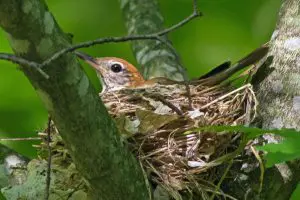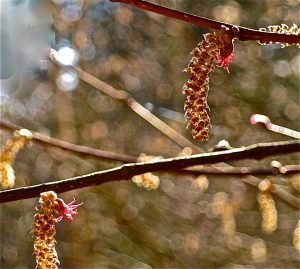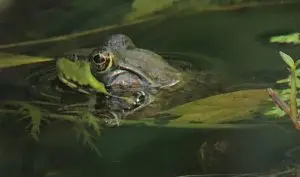Appreciating Spring
Appreciating Spring
By Dale Goodner, hike leader, volunteer, and curious citizen
The spring is alive with the sound of music… as migratory birds return from the south to nest. Their greatest hits include some of my favorite songs: hermit thrush, wood thrush; great crested flycatcher; chestnut sided warbler; black throated green warbler; red-eyed vireo; and ovenbird. Some nesting birds are year round residents, the ever present chickadees, nuthatches, and downy woodpeckers, for example.
About 97% of the vegetation of a forest is “non-tree.” There are many hundreds of species of flora, many of which are beautiful, showy; and bloom only in the spring. Their names can be descriptive and/or just weird. For example: large flowered trillium, Jack-in-the-pulpit, dutchman’s breeches, dog tooth violet, doll’s eye, blood root, gay wings, and gold thread.
Among the most vibrant sounds in the spring woods are those produced by frogs. Perhaps the earliest spring mating calls are made by wood frogs. These have been described as sounding like a gathering of miniature ducks quacking. Like most amphibians they reproduce in water, so will be found in ponds shortly after the ice melts.
One day while sitting on a bench at a Land Trust preserve, an object landed on the brim of my hat. Carefully removing the hat, I solved the mystery… a gray tree frog had landed there. It jumped to my knee, sat for a moment, then leaped into a nearby fir tree and disappeared. Gray tree frogs during spring mating, produce a series of high pitched musical trills. They can match their surroundings, for example turning green when among foliage, or changing color with temperature change.
In summer our frog music will have faded away into memory… as Robert Frost, in “Hyla Brook,” put it: “like a ghost of sleigh-bells in a ghost of snow.” For now… Experience the songs of Spring, including our little Hyla’s (gray tree frog’s) high pitched “sleigh bells” song.
Dale Goodner was a Naturalist at the Green Bay Wildlife Sanctuary before moving to Peoria, IL, where he worked for Peoria Park District. He served as Chief Naturalist at Forest Park Nature Center, then became Supervisor of Environmental and Interpretive Services. He and his wife, Mary (both alumni of UWGB), returned home to northeast Wisconsin upon retirement and now live in Algoma.




